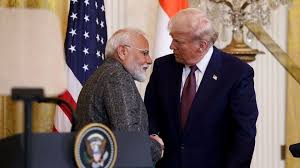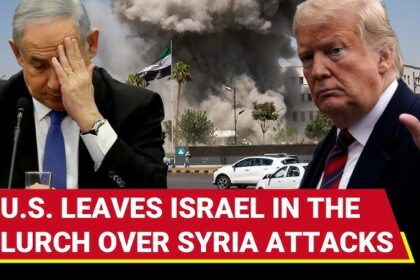Israel-Iran War Live Updates: Missile Strikes, Ceasefire Talks, and Global Reactions
A Region on Edge Explodes into Open Conflict
What began as years of strategic posturing and proxy confrontations has, in 2025, erupted into an unprecedented direct military confrontation between Israel and Iran. The international community is watching with alarm as missile strikes, diplomatic breakdowns, and real-time battlefield developments unfold across the Middle East in what is rapidly becoming a regional war with global implications.
This live conflict is not only being shaped by military operations but also by digital information warfare, ceasefire negotiations, and powerful international reactions that are shifting daily.
This multi-part article will provide a comprehensive professional breakdown of the events as they occur—capturing the pace of war, the diplomacy of peace, and the uncertainties of a region once again in flames.
While Israel and Iran have long viewed each other as existential adversaries, the trigger for the current war was reportedly an Israeli airstrike on an Iranian Quds Force compound in Syria, resulting in the deaths of senior Iranian commanders. Within 72 hours, Iran retaliated directly—breaking decades of precedent—by launching ballistic missiles into Israeli territory.
Key initial events:
- June 19: Israeli air raid near Damascus kills three IRGC officers.
- June 21: Iran launches 24 ballistic missiles at Israeli airbases in Negev and Galilee.
- June 22: Israel conducts “Operation Iron Claw,” striking targets in Tehran, Esfahan, and Khorramabad.
For the first time in recent history, both nations acknowledged direct strikes on each other—abandoning the deniability that defined their past confrontations.
Tel Aviv, Haifa, and Be’er Sheva witnessed missile alerts unseen since the 2006 Lebanon War. The Iron Dome defense system intercepted multiple incoming projectiles, but not all. At least:
- 13 missiles struck military bases.
- 6 hit residential outskirts, causing civilian casualties.
- Over 40 injuries and 9 reported deaths were confirmed within the first 48 hours.
Live footage circulated globally via satellite TV and social media, showing:
- Sirens wailing across Israeli cities.
- Iranian citizens gathering in underground shelters in western provinces.
- IDF jets streaking across the night sky en route to counterattack.
Meanwhile, Iran activated its Khordad air defense system, anticipating further Israeli retaliatory waves.
The immediate international response was one of shock and concern:
- United Nations Secretary-General António Guterres called for an “immediate cessation of hostilities.”
- U.S. President Donald Trump (having returned to office in 2024) announced that Washington was “monitoring developments” and had activated its 5th Fleet assets in the Gulf.
- Russia blamed Israeli aggression and warned against “destabilizing interventions.”
- China urged restraint but began evacuating personnel from embassy staff in Tehran and Tel Aviv.
- The European Union convened an emergency session in Brussels, calling for “diplomatic solutions through multilateral platforms.”
Energy markets reacted instantly—Brent crude spiked past $107/barrel, while global stock markets dipped sharply.
In a surprise move, President Trump held an emergency televised address, claiming to have initiated backchannel talks via Oman and Qatar. He declared that “both sides have shown interest in de-escalation.”
However, shortly after:
- Iran’s Supreme Leader Ayatollah Khamenei rejected any ceasefire as long as Israeli forces continued air raids.
- Israel’s war cabinet stated that “strategic objectives must be fulfilled before any talks.”
Thus, while the language of diplomacy emerged, it was clear that both Tehran and Tel Aviv were preparing for a longer engagement—perhaps weeks or even months.
The human cost is mounting.
- In Iran: Cities like Kermanshah and Dezful have seen mass evacuations. Power outages and water shortages are reported in border towns.
- In Israel: Thousands have moved into bunkers. Hospitals in Haifa and Ashkelon are working at full capacity.
- In Syria and Lebanon: Refugees from southern areas are streaming northward as Hezbollah appears to be preparing for action.
International aid agencies like the Red Cross and Médecins Sans Frontières have requested safe corridors, but security remains volatile.
What makes this war different is not just its geographic scale or military precision, but its real-time nature. Every development—be it a missile strike, a diplomatic phone call, or a global oil shock—is being broadcast live, reshaping the narrative hour by hour.
The world is watching. Governments are calculating. Citizens are sheltering. And both Iran and Israel, while talking the language of deterrence, seem locked in a momentum of mutual escalation.
As the direct confrontation between Israel and Iran escalated in real time, so too did the activation of Iran’s strategic doctrine—one that leans not only on sovereign military capability, but on a vast, decades-old architecture of proxy warfare. The ripple effects of the initial missile strikes now radiate far beyond Tel Aviv or Tehran. The war is no longer confined to two nations—it is regional, playing out in multiple countries simultaneously, with distinct players and unpredictable implications.
In Lebanon, Iraq, Syria, Yemen, and Gaza, the so-called “Axis of Resistance”—a network of Iran-aligned militant factions and paramilitary groups—has been unleashed, making the Israel-Iran war a Middle East-wide event with potentially global shockwaves.
Within 48 hours of Iran’s first direct missile strike on Israel, rocket fire began from southern Lebanon, targeting Israeli defense installations and border towns such as Metula, Nahariya, and Kiryat Shmona. The response was immediate: the Israel Defense Forces (IDF) launched heavy artillery barrages and precision airstrikes on suspected Hezbollah infrastructure near Tyre, Nabatieh, and Baalbek.
Hezbollah’s leader, Hassan Nasrallah, issued a rare live address declaring:
According to Israeli military intelligence, Hezbollah may have already mobilized over 20,000 fighters, with rocket arsenals—many precision-guided—strategically deployed across Lebanon.
International observers fear a repeat of the 2006 Lebanon War, only this time with:
- A stronger Hezbollah
- Long-range Iranian weapons
- More urbanized, populated Lebanese cities in the firing line
Syria, long a battleground for regional influence, has now become an active conduit for Iranian logistical operations. Reports confirm that the Islamic Revolutionary Guard Corps (IRGC) is using Syrian territory to move weapons, drones, and personnel across the Deir ez-Zor–Al Bukamal corridor.
Israel, for its part, has:
- Struck IRGC bases near Damascus
- Bombed convoys in Homs and Aleppo
- Deployed special forces to monitor border infiltration routes
This has prompted Russia, which maintains a military presence in Syria, to issue a caution:
Syrian civilians, particularly in rebel-held and Kurdish-administered zones, now find themselves caught in yet another wave of displacement and violence.
On the southern Arabian Peninsula, Yemen’s Houthi rebels—Iran’s most distant but loyal allies—have joined the war effort. In a strategic escalation, they launched:
- Ballistic missiles toward Eilat, southern Israel
- Drones targeting Israeli commercial ships in the Red Sea and Gulf of Aden
- A claimed strike on a U.S. naval logistics vessel, prompting a sharp response from CENTCOM
While most attacks were intercepted, global maritime insurers immediately raised rates, and shipping routes through the Bab el-Mandeb Strait—which channels 10% of global oil—are now under threat.
The U.S. Navy’s 5th Fleet and allies have increased patrols, but fears are rising that the Red Sea could become the maritime battleground of this conflict.
In Iraq, where Iranian-backed militias like Kata’ib Hezbollah, Asa’ib Ahl al-Haq, and Harakat Hezbollah al-Nujaba operate with significant freedom, military movements have increased dramatically.
- Convoys have been spotted moving westward toward Syria.
- Small rocket attacks have occurred near U.S. military bases in Al Asad and Erbil.
- Baghdad remains politically paralyzed—caught between a fragile pro-Western government and powerful Iran-aligned militias.
U.S. officials have warned that continued attacks on American interests could trigger a direct response, possibly drawing the U.S. into broader hostilities.
A senior Iraqi analyst told Al Jazeera:
Interestingly, Hamas and Islamic Jihad in Gaza have remained relatively restrained, a strategic silence that has raised questions in military circles. Some believe:
- Hamas may be calculating a timing advantage, waiting for Israel to be stretched thin.
- Others believe Tehran has instructed restraint to avoid overextension of the Axis.
Nonetheless, sporadic rocket fire has already resumed from Rafah and Khan Younis, triggering limited Israeli airstrikes. Analysts caution that a full-scale Gaza front would push the IDF into three-front warfare—a worst-case scenario for Israeli defense planners.
Reactions in the broader Arab world are mixed:
- Saudi Arabia and UAE have called for restraint but remain wary of Iran’s growing confidence.
- Qatar and Oman are facilitating indirect diplomacy, including messages between Tehran and Washington.
- Jordan and Egypt are reinforcing borders, fearing spillover or refugee flows.
Israel has reportedly begun informal outreach to Gulf states, seeking intelligence and airspace access—a repeat of Abraham Accords-style diplomacy under duress.
Meanwhile, Turkey has called for an Islamic summit, but stopped short of taking sides.
From Lebanon’s mountains to Yemen’s ports, from Iraqi deserts to Syrian highways, the Israel-Iran War has now transformed into a regional showdown involving state actors, proxies, militias, and global powers.
The conflict is no longer about missile launches—it’s about strategic depth, geopolitical realignments, and asymmetric warfare. And in every direction, escalation seems easier than restraint.
Whether through backchannel diplomacy or external pressure, containment remains possible—but with every passing hour, the window for de-escalation narrows, and the region tilts further toward total conflagration.
Also Read : Jahnavi Dangeti, 23, Selected for 2029 Spaceflight: India’s Rising Space Explorer








